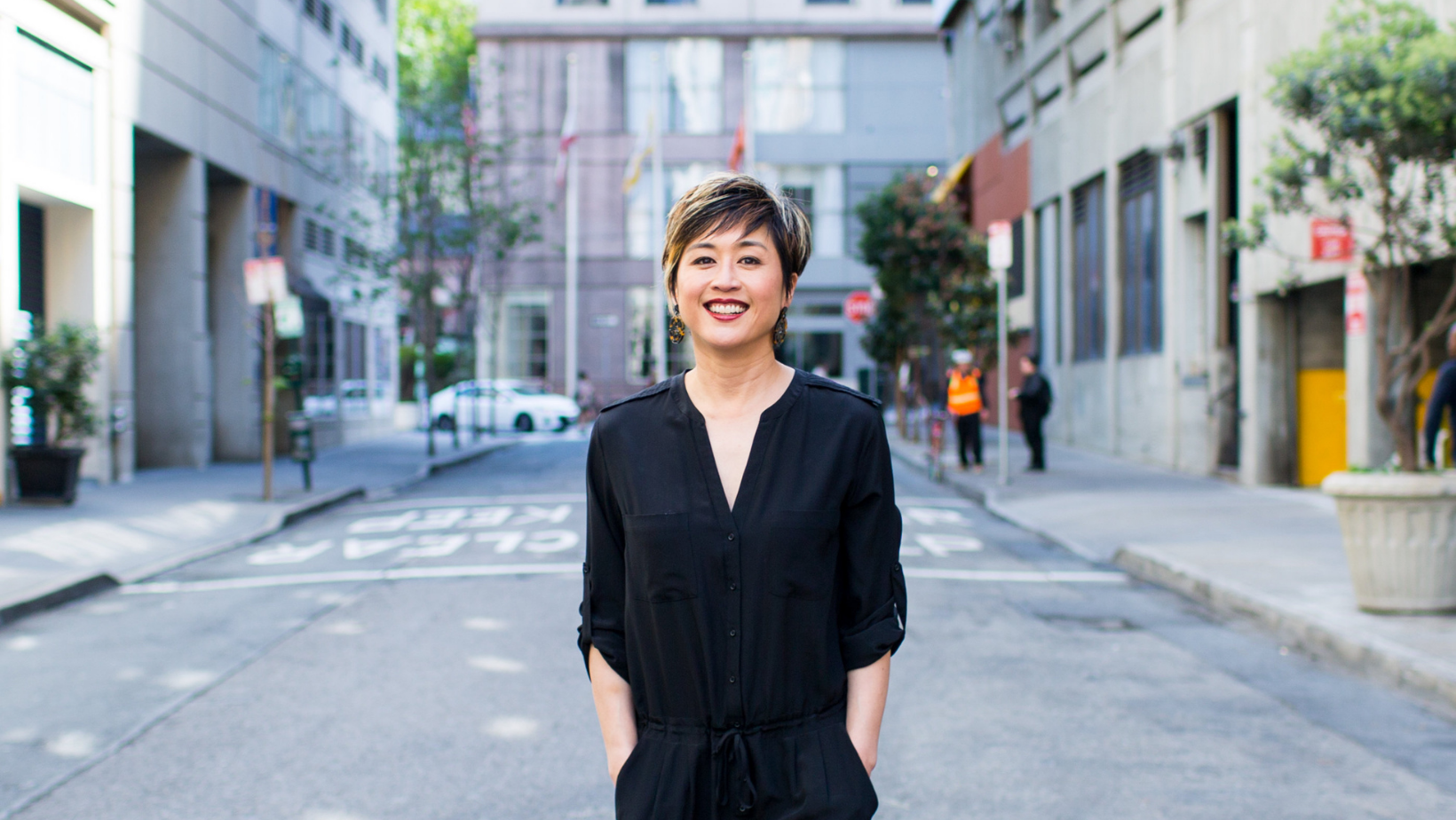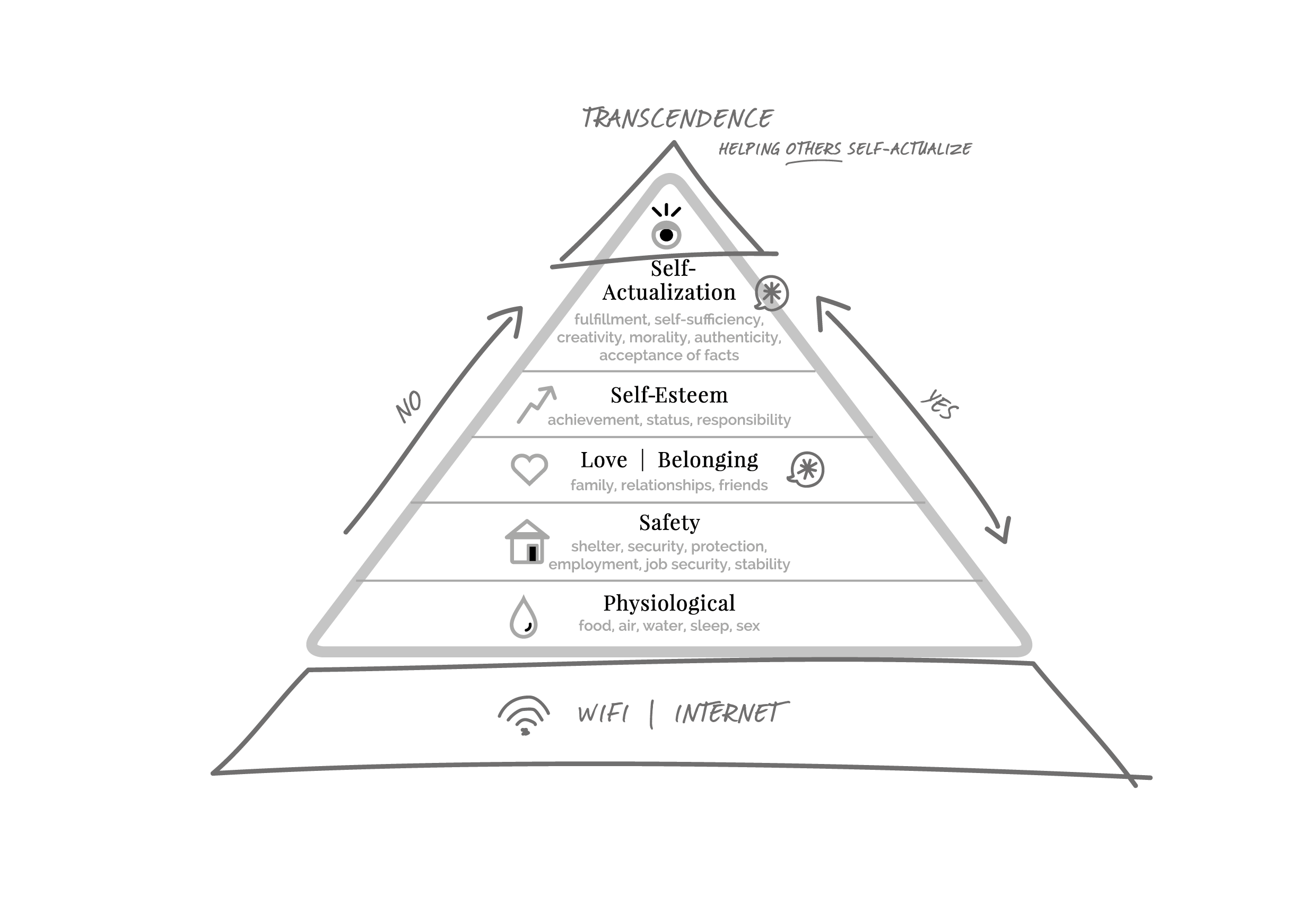
To futureproof ourselves as individuals, we need to see ourselves constantly learning and growing toward our most authentic selves. We need to figure out how to meet our basic physiological needs, feel a sense of safety, love, and belonging, and live our higher purpose. Futureproofing is about understanding the gamut of what’s possible, and then, with self-awareness, working to fill our needs—physically, mentally, financially, and spiritually—no matter what job we might currently have.
If you think this sounds like Maslow’s hierarchy of human needs, you’re spot-on.
In the book Delivering Happiness, Tony shared Maslow’s hierarchy of human needs because he believed that once people’s basic survival needs are met, they’re more motivated by nonmaterialistic needs like achievement, creativity, and relationships. It was a nod to how important psychology is in building successful businesses with people (and happiness) prioritized. This was the version that he shared in that book:
Since Maslow published his theory on the hierarchy of human needs in 1954 there’s been a lot of conversation, and sometimes controversy, around it. It’s impressive that it still holds up after all this time, but a lot has changed since then. For it to stay relevant in today’s world, some concepts have to evolve.
So let’s revisit Maslow’s theory with the current state of humanity, and how DH has expanded our model, in mind:
• Change from bidirectional to unidirectional—Maslow’s original idea was that the pyramid is a ladder that needs to be climbed to the peak of self-actualization, but it’s really more of a spectrum. People who don’t have everything at a given level of the pyramid (like job security) can be more self-actualized than someone who has all their needs met. Our existence is more complex than a hierarchy.
• Expanded levels of love/belonging—A sense of belonging is not just about our immediate relationships with friends, family, coworkers, and groups of affiliation anymore. Now that we’re hyperconnected with technology, that sense includes a bigger scope of diversity, equity, inclusion, and belonging (DEIB) that applies to every interaction within the global society at large (something we’ll do a deep dive on when we come to Part V).
• Expanded levels of self-actualization—Self-actualization is still about seeking fulfillment and change through personal growth. Seeking our full potential hasn’t changed; it’s how we see that potential that has evolved. Rather than just doing all that we’re capable of and achieving what Maslow called the “peak” experiences of joy and euphoria, self-actualization in the forms of fulfillment and authenticity can come from understanding our valleys (i.e., lows and shadow sides) too.
• New addition of transcendence—This was an addition made by Maslow himself in the years before his death in 1970; it means people are motivated by values not just for personal benefit but by experiences with nature, spirituality, and the selflessness of helping others self-actualize too. I’ll expand on this when I talk about the greenhouse model and how we all have an ability to make a ripple of impact by helping others build their greenhouses.
• New addition of Wi-Fi and the internet—If he were still alive to update the model, I’m sure Maslow would add these as the basis of all human needs (wink).

Understanding the ways in which Maslow’s hierarchy has evolved helps us envision what it means to futureproof our own lives. Even during times of high VUCA (volatility, uncertainty, complexity, ambiguity), we know that the things we can do toward self-actualization, purpose, and fulfillment are intrinsically within us. Even if we don’t have every level of Maslow’s pyramid completely checked off, we can still be fulfilled in what we do for work and how we live our lives. On the flip side, even if we have most of the levels checked off, we’re not automatically self-actualized. In both scenarios, it takes work to truly be our authentic selves.
Futureproofing our businesses and individual work/life may seem complex, but the greenhouse model I’ll be sharing was designed to simplify it. With all the noise in our busy lives and shrinking attention spans, who has time to ponder existential questions every day if their first name isn’t Plato and their last name it’s Nietzsche? Instead of spending precious time questioning our lives, we can use the time toward living it… in the best, biggest, and most meaningful ways.
+
+
Excerpted from Beyond Happiness: How Authentic Leaders Prioritize Purpose and People for Growth and Impact by Jenn Lim. Copyright © 2021 by Jennifer Lim. Reprinted with permission of Grand Central Publishing. All rights reserved.

